Explore the hazardous world of ship-breaking with photographer Jan Møller Hansen
Dr Thom Davies, Research Fellow at the Department of Sociology, University of Warwick @ThomDavies
As maritime geographer Kimberley Peters writes, ‘ships and the sea occupy the edges of our consciousness; they are largely invisible and seemingly irrelevant in our everyday lives.’ And yet, as she continues, almost everything in the room you are currently sitting in has probably spent time at sea. The world’s cargo is transported by ocean: 90% of everything is moved by the convenience of buoyancy. For all the billionaire-spaceships and smart-cars of our age, the humble ship is the true vehicle of late-modernity; mobilising neoliberalism in perfect containerized form.
Yet there remains something beguiling and opaque about the sea. Something the author Rose George calls ‘sea blindness’. As anthropologist Hannah Appel writes in her work about offshore oil rigs; beyond the horizon the sea becomes a place of fantasy. For big business, ‘the offshore has become a space of capitalist desire’: an unregulated and unseen paradise, seemingly disentangled from the political, social, and environmental responsibilities of the land. To draw on Anna Tsing’s work, the ocean gives the illusion of being ‘entirely without friction’.
‘In a nautical world of unregulated labour, ships become mobile spaces of inequality’
This apparent lack of friction can be read in the secretive world of Superyachts, where ‘butlers in boardshorts‘ are denied basic labor rights. This pales when compared to life onboard some of the 100,000 cargo ships that move nine tenths of the world’s stuff, across two thirds of the planet’s surface. On some container ships exploitation is rife: in one case, seafarers were forced to grow vegetables on deck as they waited for long-overdue wages. In a nautical world of unregulated labour, ships become mobile spaces of inequality. As Global Policy Forum report, ‘accidental injury and fatality rates in merchant shipping are among the highest in any industry.’
If the human cost of shipping is hidden, then the environmental impacts are even less visible. In terms of Greenhouse gas emissions, the shipping industry contributes 2.4% of the global total, putting maritime trade on par with Germany. The environmental damage of the shipping industry is often only surfaced during large scale catastrophes. The Torrey Canyon disaster in 1967 and the Exxon Valdez oil spill in 1989 both became visual icons for environmental harm. But the everyday mobility of the ships is also highly polluting: many large ships run on ‘bunker oil’, low-grade marine fuel that contains 3,500 times more sulfur than regular diesel. Scientists estimate that medium sized cruise ships, for example, can have the polluting impact of a million cars. These toxic outputs are not dispersed evenly across the vast expanses of the sea, but can become concentrated in local geographies: the Hong Kong government estimate that half of the pollutants in the port city originates from shipping.
‘Hansen’s photographs reveal the twisted metal and expendable lives of the shipbreaking industry’
The life of a ship then, as its crisscrosses the world’s oceans, can be a major source of pollution. But the ‘afterlives’ of ships too can create a toxic legacy. Photographer Jan Møller Hansen has visualised the places where ships go to die, in his project ‘The Graveyard of Giants’. In this photo series he gained access to Chittagong in Bangladesh, the world’s largest shipbreaking yard. His images reveal the unregulated guts of this dirty industry, exposing the twisted metal and expendable lives of shipbreaking in the Global South. These striking images, of ships torn open and workers toiling in perilous conditions, remind me of philosopher Achile Mbembe’s description of the ‘death-worlds’ that capitalism and colonialism have created: ‘new and unique forms of social existence in which vast populations are subjected to conditions of life conferring upon them the status of living dead.’
The scale and toxic impact of the ship breaking industry is startling. As the NGO ‘Shipbreaking Platform’ report, the first quarter of 2018 has seen 152 ships sold to the polluted beaches of South Asia to be broken. In the same period, two workers have been severely injured and ten have been killed by this dangerous industry. In other locations too, workers have lost their lives: in March this year two labourers died in a toxic gas leak in the Alang ship-breaking yard in Bhavnagar, India.
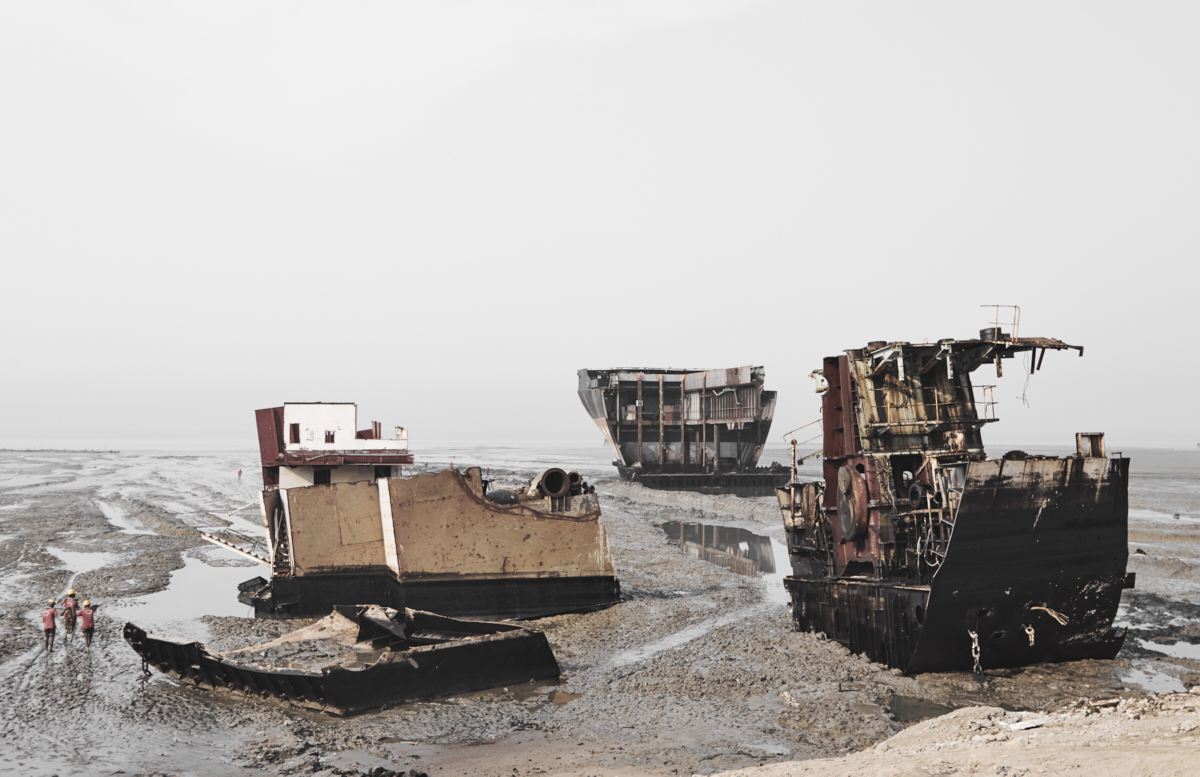
Scientific research has located high levels of plastic fragments in the beaches around ship breaking yards, with ‘81 mg of small plastics fragments per kg of sediment’. Other research has shown that a high concentration of heavy metals in the water near these sites. The toxic contamination from breaking these vessels into sellable parts is not restricted to the water or sediment: Nøst et al (2015) found high concentrations of toxic emissions in the air near to ship breaking sites, with ‘elevated human health risks caused by inhalation’.
‘Countries in the Global North wash their hands of responsibility for the toxic impacts their ships will cause’
Adding to this maritime geography of environmental injustice, scrap metal dealers often re-register ships before their last journey to the beaches of South Asia. These ‘flags of convenience’ mean countries in the Global North can wash their hands of responsibility for the toxic impacts their ships will cause. Shipbreaking Platform – a Brussels-based coalition of environmental, labour, and human rights groups – report that nearly half of the ships sold to South Asia so far this year changed flag at the last minute, to be registered with countries such as Saint Kitts and Nevis, or the East African archipelago of Comoros.
Although ship breaking takes place in 79 countries, most of the heaviest, dirtiest dismantling occurs on the tidal beaches of the Global South. Echoing other environmental injustice issues, the source of this trade in elderly ships comes from the Global North. As Tony Puthucherril writes in his book about shipbreaking, ‘These yards resemble huge battlefields with metal pieces, asbestos sheets, thermocol, glass bits, equipment from the ship, oil, and other substances strewn all over‘. Indeed, Hansen’s images portray the materiality of pollution, in all its tangible, vibrant forms. In this sense it reminds me of Toby Smith’s photographs of rare earth extraction in the collaborative project ‘Rare Earthenware’. In ‘The Graveyard of Giants’ we are presented with the monumental, the sublime, and the enormity of the ship’s afterlives.
In a forthcoming book, feminist environmental scientist Max Liboiron writes that ‘pollution is colonialism’. Shipbreaking is a tragic example of this; how pollution is entangled into multiple layers of colonialism, exploitation, and denial. Photography such as Hansen’s can shine a light on the friction of global inequality, transfering the toxicity of shipbreaking from ‘edges of our consciousness’ to the forefront of our minds.
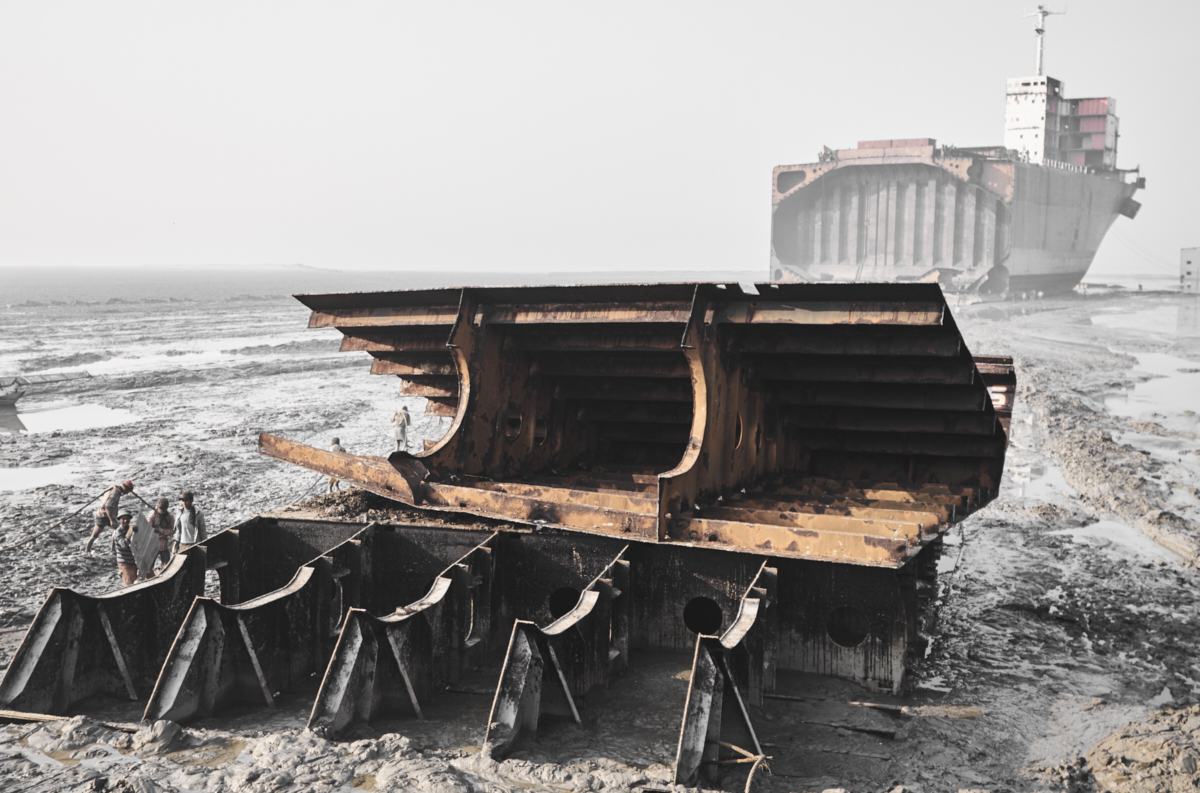
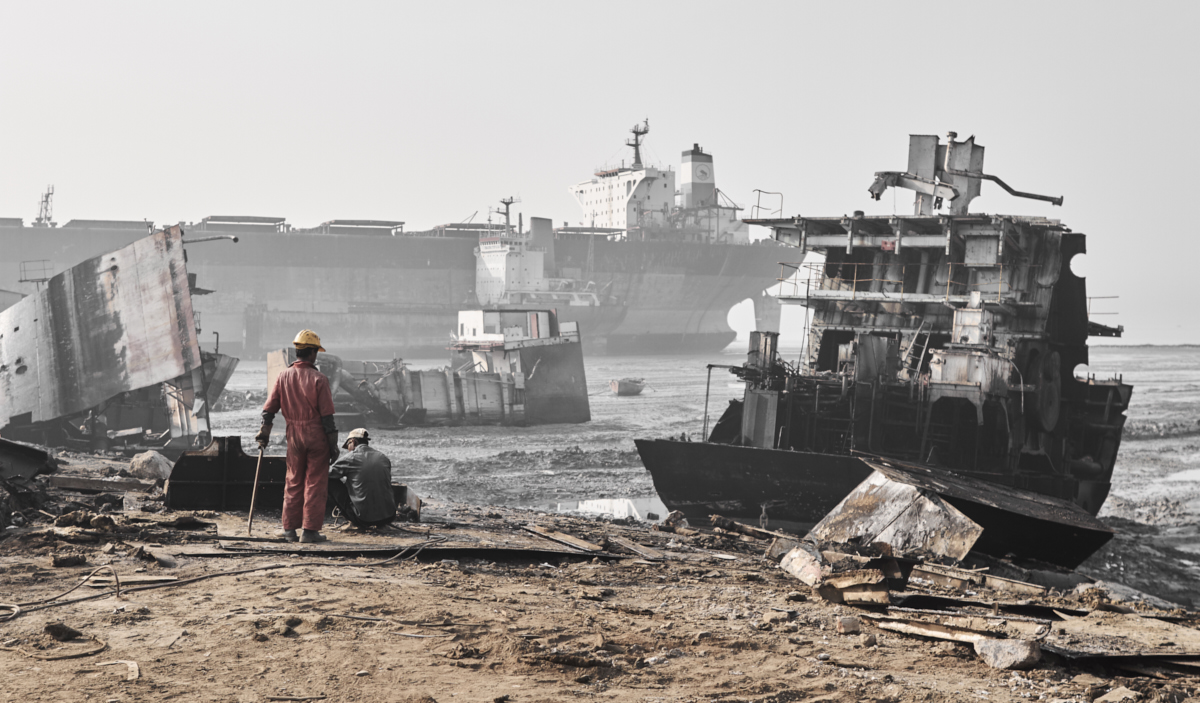
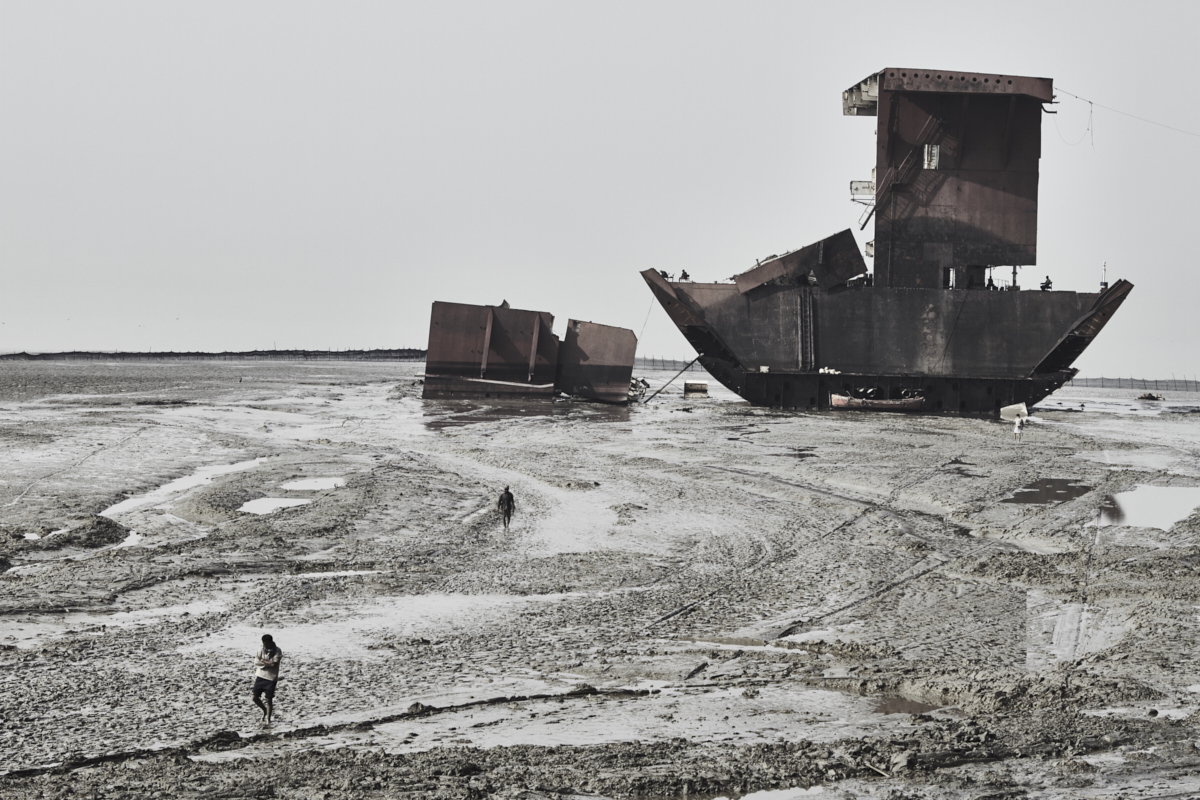
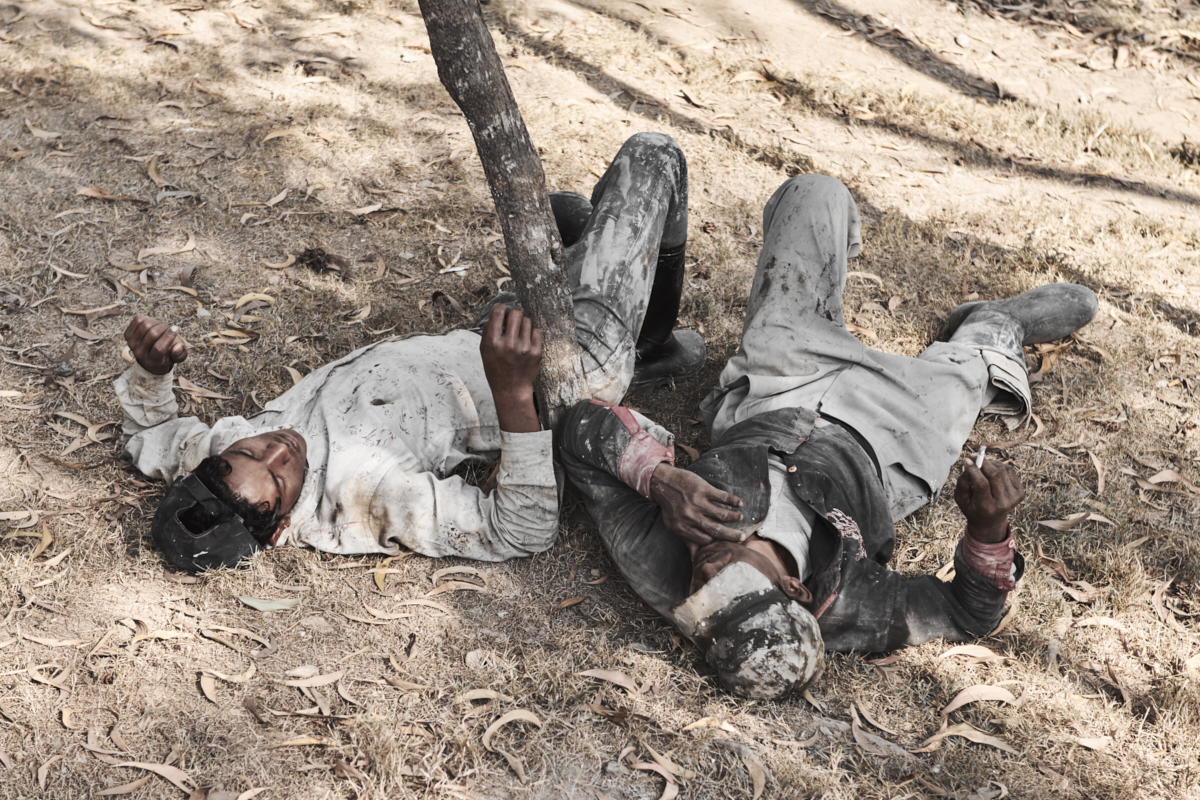
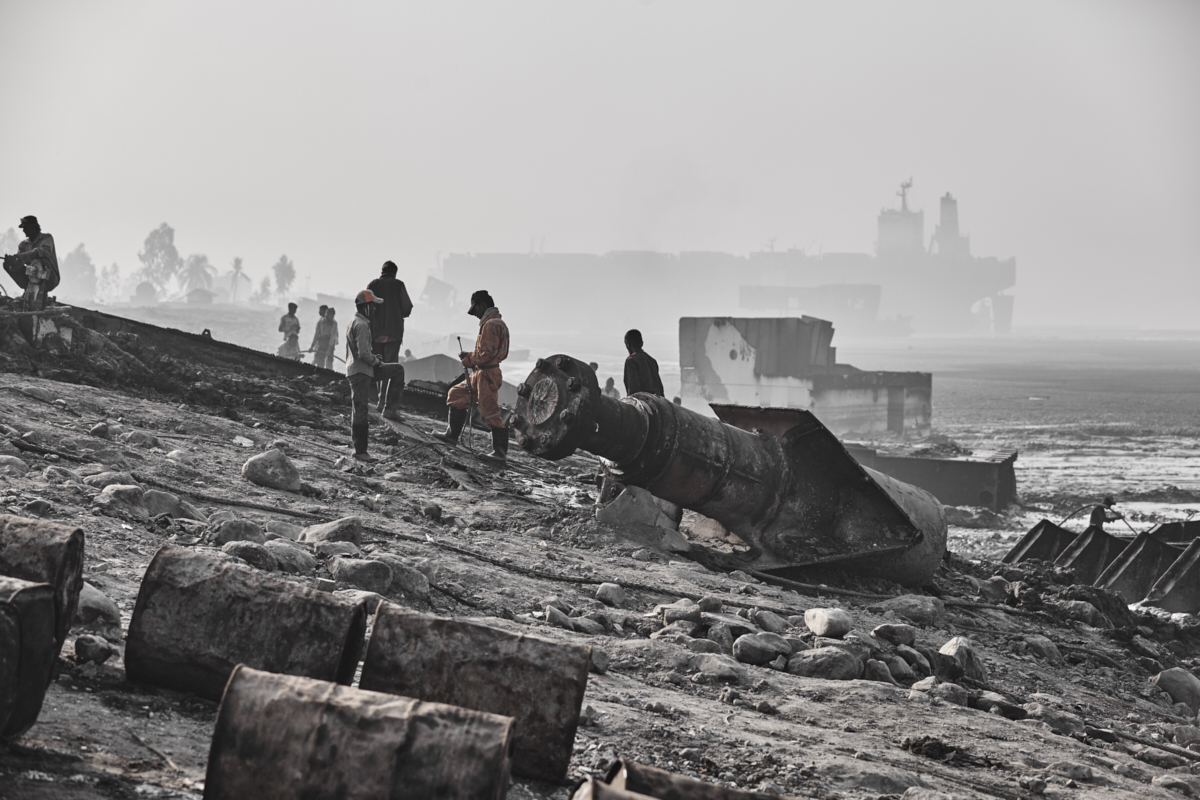
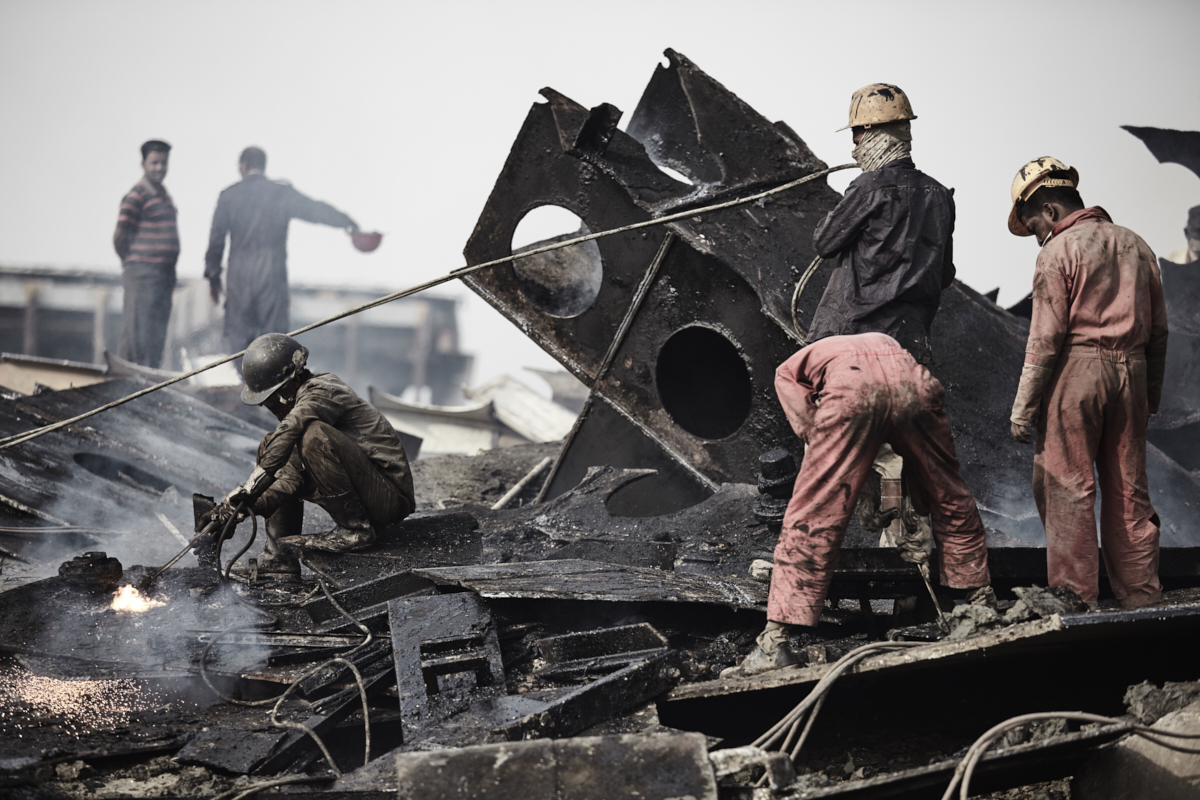
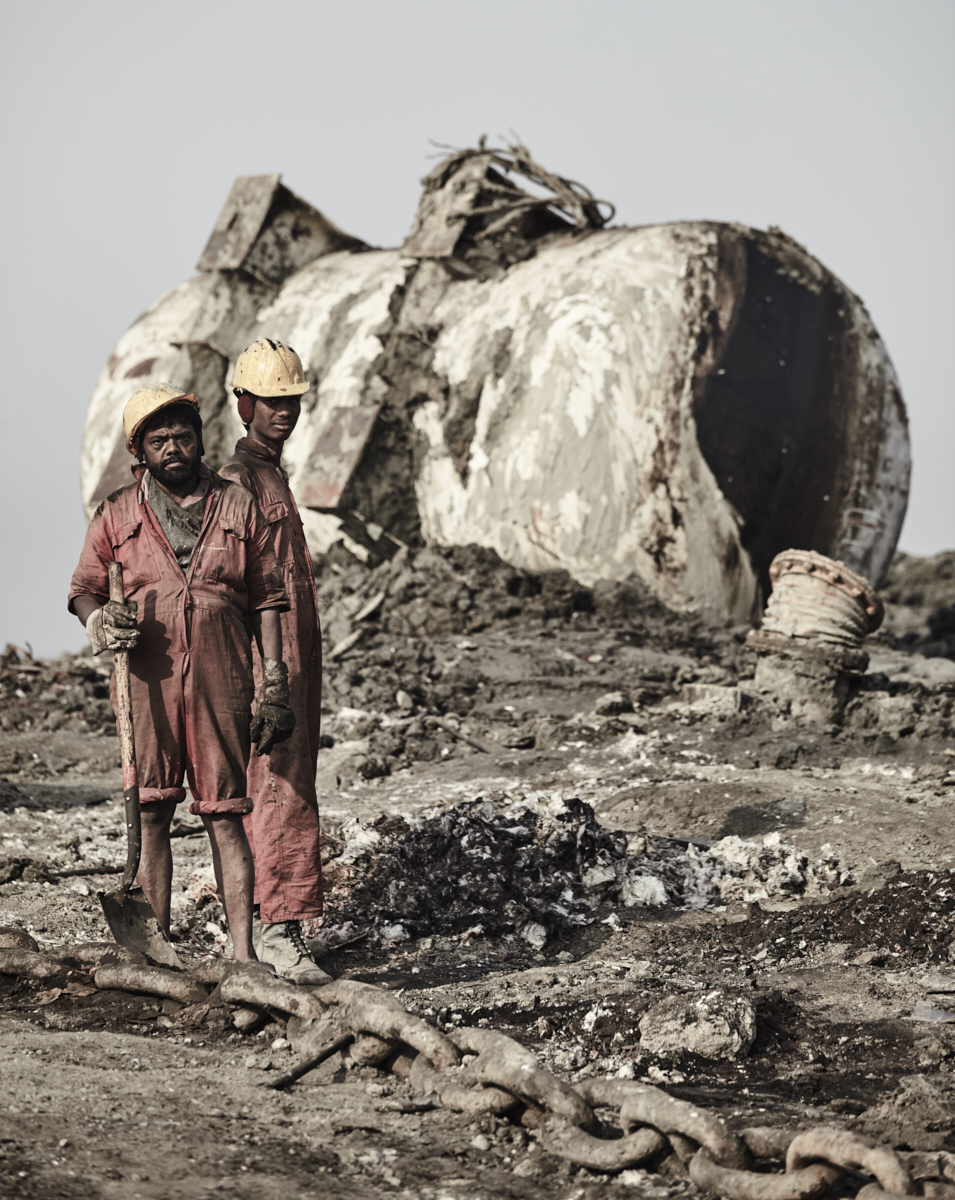
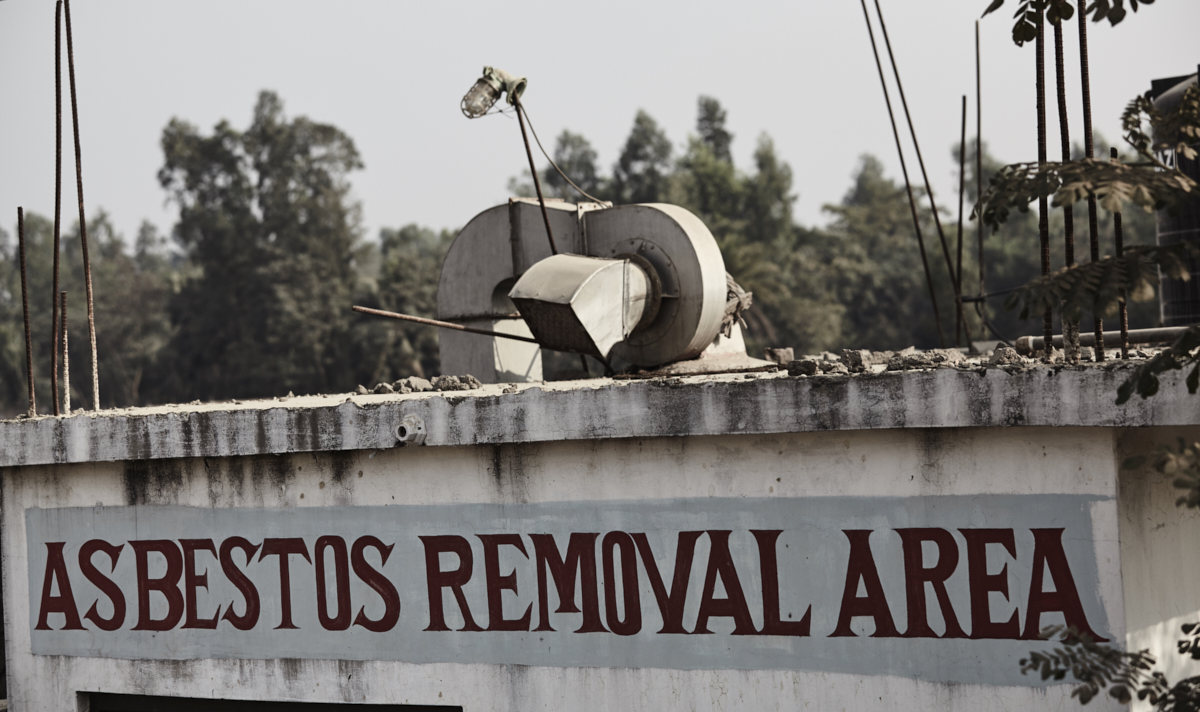
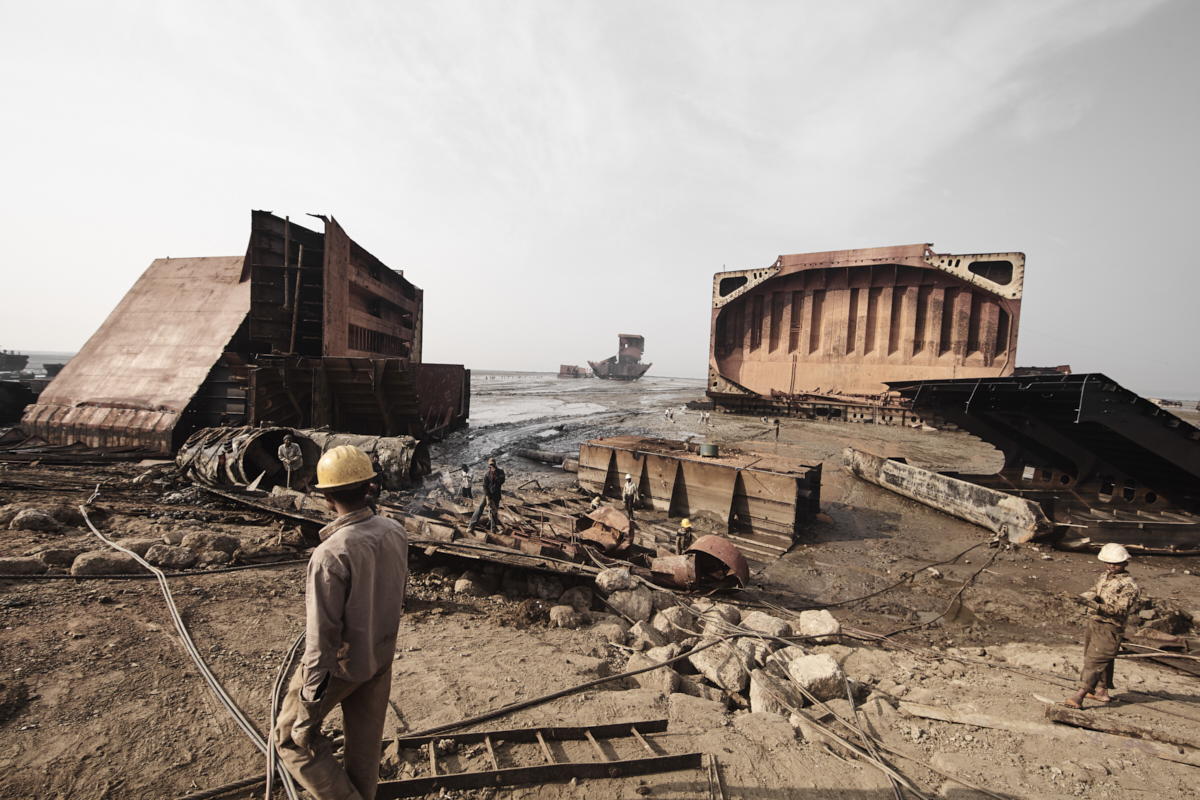
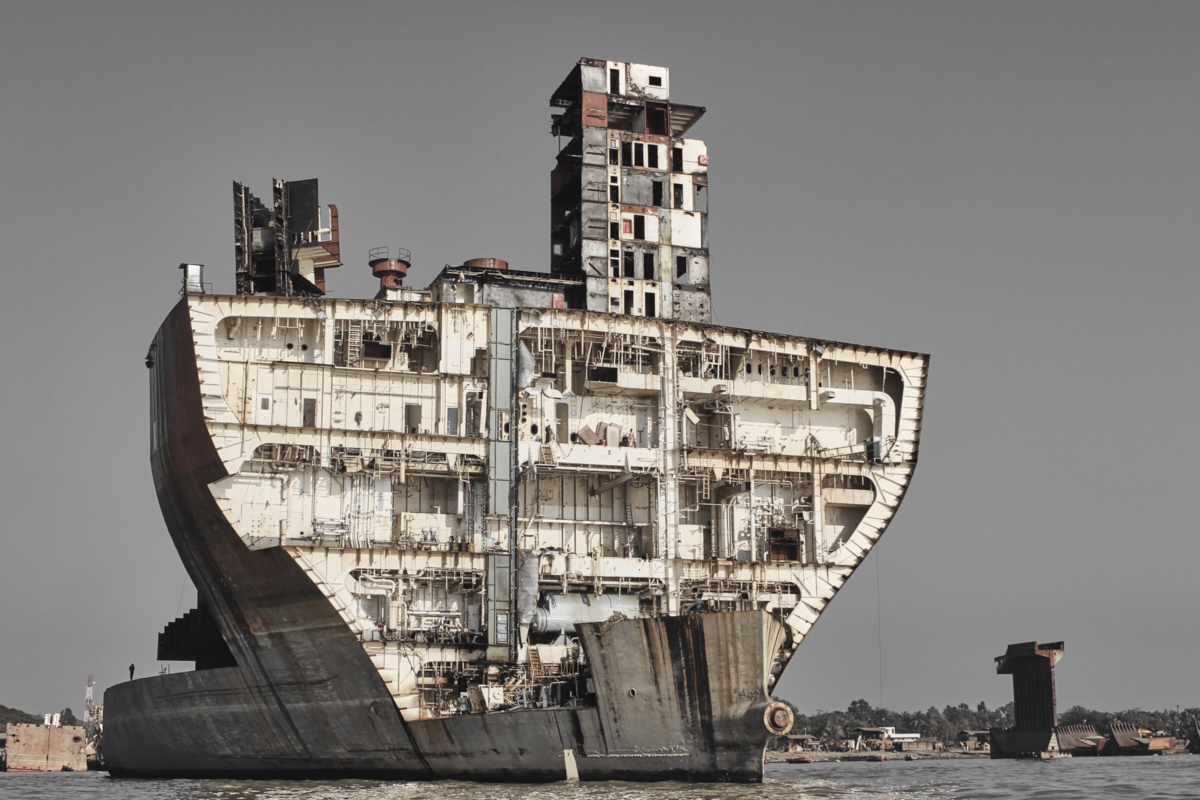
Many thanks to Jan Møller Hansen for letting me publish his photographs. You can follow him on Instagram here; find him on facebook here; and check out his website here.
Other articles in this Special Issue:
- Editorial: Toxic Visions – Photography and Pollution
- Exposing a Chemical Company
- The Red Forest: Picturing Radiation with Infrared Film
- Disposable Citizens: viewing Chernobyl through the lens of those live there
- The derelict afterlives of para-nuclear waste
- Rare Earthenware: photography, pottery, and pollution
- Treasure: Landscapes of the U.S. Strategic Petroleum Reserve
- Voyage on the planet: contemplating pollution with Chih Chiu
- Toxic Expertise Annual Workshop 2018
References
Appel, H., 2012. Offshore work: Oil, modularity, and the how of capitalism in Equatorial Guinea. American Ethnologist, 39(4), pp.692-709.
Nøst, T.H., Halse, A.K., Randall, S., Borgen, A.R., Schlabach, M., Paul, A., Rahman, A. and Breivik, K., 2015. High concentrations of organic contaminants in air from ship breaking activities in Chittagong, Bangladesh. Environmental science & technology, 49(19), pp.11372-11380.
Mbembé, J.A. and Meintjes, L., 2003. Necropolitics. Public culture, 15(1), pp.11-40.
Puthucherril, T.G., 2010. From shipbreaking to sustainable ship recycling: Evolution of a legal regime. New York: Brill Press
Peters, K., 2010. Future promises for contemporary social and cultural geographies of the sea. Geography Compass, 4(9), pp.1260-1272.
Reddy, M.S., Basha, S., Kumar, V.S., Joshi, H.V. and Ramachandraiah, G., 2004. Distribution, enrichment and accumulation of heavy metals in coastal sediments of Alang–Sosiya ship scrapping yard, India. Marine Pollution Bulletin,48(11-12), pp.1055-1059.
Reddy, M.S., Basha, S., Adimurthy, S. and Ramachandraiah, G., 2006. Description of the small plastics fragments in marine sediments along the Alang-Sosiya ship-breaking yard, India.Estuarine, Coastal and Shelf Science, 68(3-4), pp.656-660.
Tsing, Anna 2005 Friction: An Ethnography of Global Connection. Princeton: Princeton University Press.
Wan, Z., Lam, S., and Leung, R. 2015. 2013 Hong Kong Emission Inventory Report, Air Science Group: The Government of the Hong Kong Special Administrative Region (accessed here)
